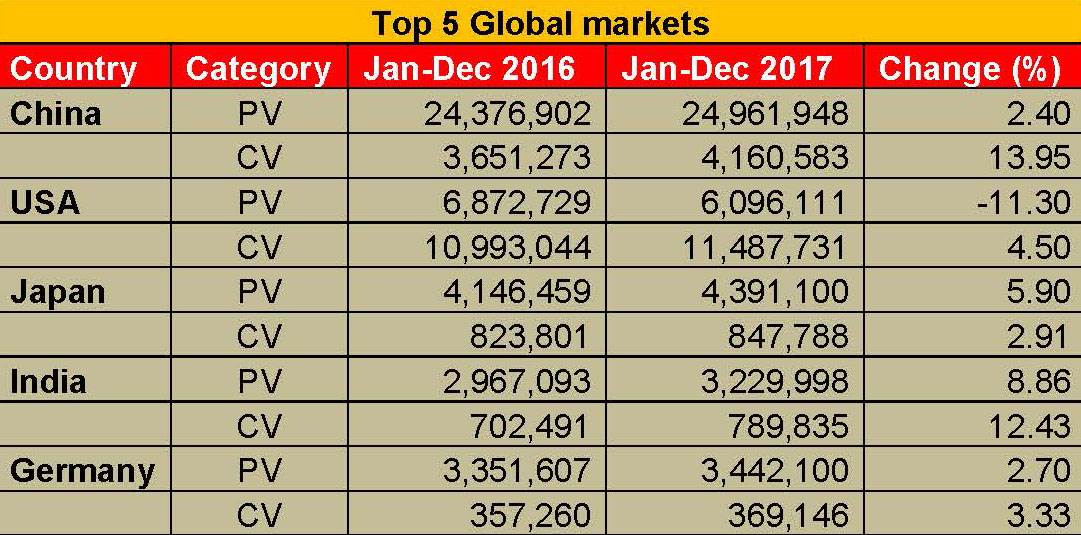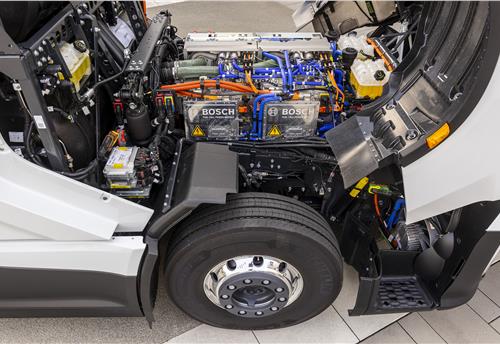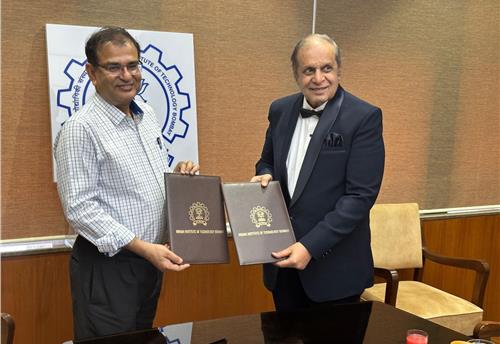India drives past Germany, becomes world’s 4th-largest vehicle market
Combined passenger vehicle and commercial vehicle sales take a resurgent Indian automobile industry past Germany. It is billed to become the No. 3, currently Japan, in 2020.
The Indian automotive industry is on an adrenaline-fueled drive. In CY2017, the industry notched record highs across vehicle segments. Importantly, it surpassed Germany to become the fourth largest market for vehicles globally. Clearly, it is one of the fastest growing markets worldwide and is pitched to become the No. 3 by around 2020.
In CY2017, India registered sales of 4,019,833 units (3,229,998 PVs and 789,835 CVs) witnessing a growth of around 10.64 percent. In comparison, the German market which sold 3,811,246 (3,442,100 PVs and 369,146 CVs) grew by 3.01 percent.
India now trails behind China, USA and Japan, which are the world’s top three countries in terms of sales volume (see detailed table below). The industry which has seen many disruptions in the past few years has now return to the growth path. The bigger question though is despite the robust growth, would the industry be able to sustain this boom? Or was the record year a once-in-a-blue-moon scenario that might see a correction?
India is poised to see improved economic growth. A few of the factors which automakers would bet on to see sustainable growth are projections of increase in GDP, rising disposable income, a sharp focus on infrastructure development that would translate to improvement in mobility and in turn a rise in demand for vehicles, the low penetration of vehicles per capita which means there is still headroom for growth, new entrants in the industry that would further help expand the market, and the various policies that affect the existing vehicle parc and translate into new orders for the OEMs.
A fiscal on fire
If the calendar year 2017 was a bumper one, then the fiscal year 2017-18 saw the industry touch several new highs. The passenger vehicle segment touched a new high of 3.3 million, PV production crossed the 4 million mark (UVs crossed the 1-million mark), two-wheeler sales hit a record peak of 20.2 million units with production at 23 million (scooters 7 million and motorcycles 15 million), CV sales touched 856,000 units, record two-wheeler exports and even the three-wheeler segment crossed production of a 1 million and sales at 653,000 units, which were its highest ever.

RELATED ARTICLES
Tata Elxsi-Renesas MCU for EVs enables cost optimisation, speedier time to market
Modular, scalable design of Motor Control Unit enables integration across diverse EV applications. Claimed to be reduce ...
Bosch hydrogen engine tech-powered truck to be on Indian roads this year
The global supplier of technology and services is betting big on both electromobility and hydrogen. While announcing the...
IIT Bombay inaugurates Arun Firodia Research Floor
IIT Bombay, one of India’s top technical and research institutions, honours Kinetic Group chairman Dr Arun Firodia, one ...





 13 Apr 2018
13 Apr 2018
 9378 Views
9378 Views





 Autocar Pro News Desk
Autocar Pro News Desk




